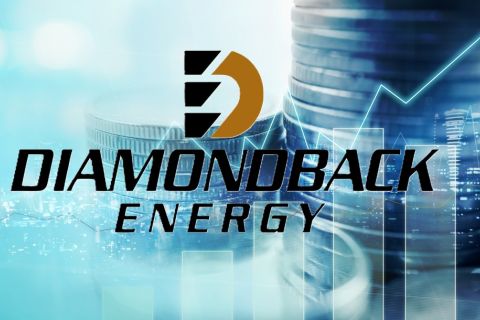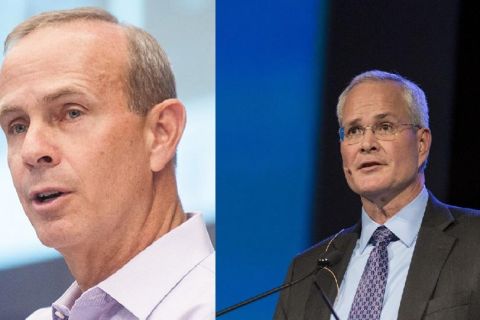If private capital were a forest, today it would be ablaze! High energy prices, particularly for natural gas, have fanned opportunity for private equity and structured debt to the extent that all the name-brand shops are operating at a scorching pace, and new names are adding fresh fuel to the flames. Despite high commodity prices, the private equity sector is experiencing white-hot investment activity, largely supporting management teams whose prior record of success demonstrates their capacities to create value in whatever pricing regimes. Perhaps because of high commodity prices, mezzanine capital is seeing an even greater frenzy than before the implosion of 2002, mainly backing low-risk drilling. Significant new capital is entering the sector in three ways: • Through general investment funds newly interested in energy, • New energy-specific funds being formed to back recycled energy financiers and • Existing energy funds, many of which are currently in the market or expect to be so in 2004, to raise fresh funds, having already spent their record raises of the past three years. What's going on? During periods of high commodity prices, private equity providers should theoretically back off, preferring to invest when the costs of producing properties, goods and services are down. "Nonsense!" says Ken Hersh of Natural Gas Partners, Irving Texas. "We don't behave any differently in this environment than in any other. We back good management teams with sound business strategies, day in, day out." He does agree, however, that the pace of activity during the past 18 months has picked up dramatically due to a lack of public capital, withdrawal of some senior banks and a reduction in the mezzanine lenders. Given the upside potential provided by Natural Gas Partners' back-end incentivization, Hersh says he rarely finds entry valuation a problem, even in high-price environments such as this one. "Over just the past six months, all but two of our 20 portfolio companies have completed good acquisitions. In August alone, we closed on, or had pending, over $60 million of new investments. There's no dearth of good equity opportunity." This sentiment is echoed by Jeffrey Harris of Warburg Pincus. Although the New York firm is drillbit-focused-and tends to be even more so in times of high prices-it always seeks outstanding managements that can create value in any price environment. During the past 18 months, Warburg has committed just under $500 million to three start-ups. All focus on creating value through the drillbit, but are proven acquirers as well. Jon Farber of Lime Rock Partners, Westport, Connecticut, takes a somewhat different, perhaps more classic, tack: "Given our long-term bias below the current commodity strip prices, we are extremely selective in our review of exploration and production deals." Lime Rock is closing an E&P financing in the Rocky Mountains and is actively looking at others, but Farber admits the majority of his new Fund II investments have been in the service sector. Wil VanLoh of Quantum Energy Partners, Houston, says that in late August, Quantum was closing three equity investments, with two others under way. In two deals, the candidates had acquisitions tied up, and through hedging, they had been able to lock in between 70% to 80% of their purchase prices, removing most of the equity risk. He is seeing an extraordinary number of investment opportunities where managements have rights to drill development wells for shallow gas or "statistical" wells in coal or shales, with low to moderate geological risk, great scale and, again due to astute hedging, with unusually low financial risk. Marty Phillips of EnCap Investments LLC, Houston, concurs: "Over the past two years, we have gravitated more and more to the drillbit, especially toward lower-risk wells, particularly if combined with acquisitions." While he admits that 2002 was slow, due largely to price volatility that inhibited acquisition activity and related financing, an EnCap specialty, he perceives a consensus growing on pricing. "Already, acquisition activity has picked up." Mezzanine trends Perhaps facilitated by high commodity prices, mezzanine capital has come roaring back. Wells Fargo and Prudential Capital have expanded their exposures and activity levels. New energy mezzanine sources like Petrobridge Investment Management and Goldman Sachs have captured seasoned talent and organized significant financial backing. As Mike Keener of Petrobridge in Houston says, "We have never seen so much deal flow with so much opportunity to capture highly predictable financial spreads underpinned by hedging." Petrobridge is a classic example of the modern private mezzanine provider. Born in the aftermath of the demise of Shell Capital and Mirant Energy Capital, Petrobridge marries the talents of the respective heads of the two providers, and has secured the backing of several general investment hedge funds in New York, none of which had previous experience in energy. "We are seeing lots of acceleration or development drilling projects, particularly in the Gulf of Mexico, as well as across the country," says Keener. "Lots of the deals are not well thought out or documented-but at least 10% are worth considering, and that alone keeps us hopping." Finally, Jay Squiers of Prudential Capital's Dallas office notes companies often take advantage of high prices to monetize their proved developed reserves in order to underwrite exploration. Prudential and, most recently, Morgan Stanley, are facilitating this by reintroducing the volumetric production payment. The latter represented a $300-million financing of Apache's recent acquisition of Shell E&P assets in the Gulf of Mexico. -Cameron O. Smith, Cosco Capital Management LLC
Recommended Reading
Petrie Partners: A Small Wonder
2024-02-01 - Petrie Partners may not be the biggest or flashiest investment bank on the block, but after over two decades, its executives have been around the block more than most.
CEO: Coterra ‘Deeply Curious’ on M&A Amid E&P Consolidation Wave
2024-02-26 - Coterra Energy has yet to get in on the large-scale M&A wave sweeping across the Lower 48—but CEO Tom Jorden said Coterra is keeping an eye on acquisition opportunities.
Endeavor Integration Brings Capital Efficiency, Durability to Diamondback
2024-02-22 - The combined Diamondback-Endeavor deal is expected to realize $3 billion in synergies and have 12 years of sub-$40/bbl breakeven inventory.
Exxon, Chevron Tapping Permian for Output Growth in ‘24
2024-02-02 - Exxon Mobil and Chevron plan to tap West Texas and New Mexico for oil and gas production growth in 2024, the U.S. majors reported in their latest earnings.
Patterson-UTI Braces for Activity ‘Pause’ After E&P Consolidations
2024-02-19 - Patterson-UTI saw net income rebound from 2022 and CEO Andy Hendricks says the company is well positioned following a wave of E&P consolidations that may slow activity.





